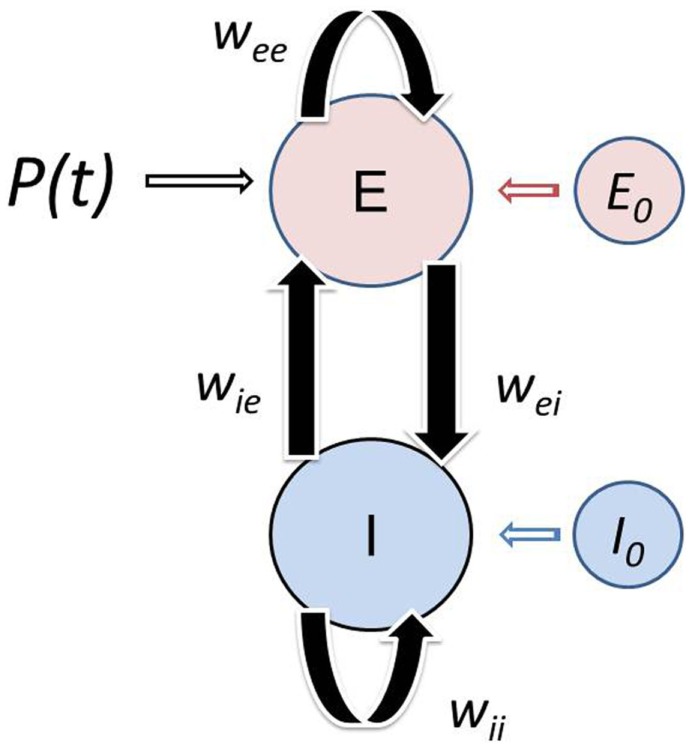Figure 1.
Schematic of the modified Wilson–Cowan model. The localized population consists of excitatory and inhibitory neurons that interact with each other with negligible transmission delays. The population receives afferent input P(t). Simultaneously, the population is subject to influences from both nearby and distant cortex. This top-down modulation of the neural population is the result of feedback from large-scale networks and/or global synaptic fields spanning the cortex. The model consists of an Excitatory (E) and Inhibitory (I) subpopulations with membrane time constants τE and τI, which interact with each other via the connection weights wEI and wIE. The neurons within each subpopulation also interact with each other, reflected in the self-excitation wEE and self-inhibition wII weights. The influence of other cortical areas on the population is reflected in the background state of the excitatory E0 and inhibitory I0 subpopulation. The Wilson–Cowan model was modified to incorporate the background state variables (see Appendix).

